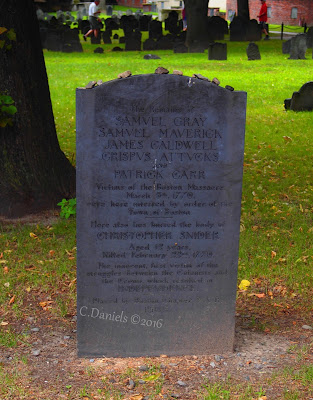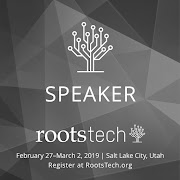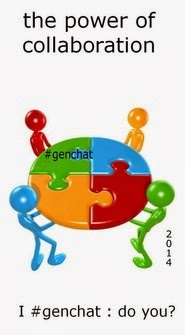The Kentucky Historical Society has a new database that should be on your radar when researching your Kentucky Civil War era ancestors - and be sure to read to the end - they will need your help with the next phase of identification!
Civil War Governors of Kentucky, Digital Documentary Edition (Early Access.) Why would Kentucky genealogists be interested in a database seemingly about Civil War Governors? Because this database is another way to explore your FAN (friends, associates & neighbors) connections on a state level. Yes, the documents are connected to Kentucky Governors of the time, but in a broad sense. Since no man is an island - think of Governors as conduits of action - actions that involved people, and produced documents to record those actions. The Civil War was a traumatic event for our ancestors, regardless of whether they went to war or not. Just think about the daily disruptions that took place: theft, requisitioning, violence, economic changes/challenges, jurisdiction/authority questions/changes, abuse of power, etc. Let's just say, there were many challenges that arose during this time to warrant civilian appeal to the Governor himself.

In Kentucky, we had a split government - resulting in a Governor for each side - with a total of five Governors during the War. Each man produced thousands of documents pertaining to the petitions of Kentucky's citizens. Much like court records and/or newspaper articles, the information found within these documents help to flesh out the bones. They provide a supplemental view into our ancestors' lives - during a volatile period that shaped the future for many generations.
So let's get down to brass tacks - what can you find if you search for an ancestor? First, I would keep it simple at this point. Look for unique surnames first, followed by individuals. You can also search the documents by location or subject. All prove to be very helpful when taking a closer look at your ancestor's sphere of influence. An important note about where the documents came from: So far, documents were scanned from the Kentucky Department for Libraries and Archives (KDLA), Kentucky Department of Military Affairs, Kentucky Historical Society, Maker's Mark Distillery, and the Mary Todd Lincoln House.
Just what did I find when searching for my family? Not a lot, to be honest. But I haven't abandoned the site, and hope to study further into the documents on a regional/county level. You will see from my result why sticking to this project will be important for the future.
As a disclaimer, I only searched for my unique surnames, not individuals. I didn't get any hits with most of them, and then I typed in "Allender." I found one document hit that provided me with multiple connections. But you'll have to pay close attention to the spelling variations that demonstrate the importance of literally "exploring" the documents.
My "Allender" hit turned out to be a petition for sentence remission regarding the conviction of a local man, Lewis Cummins. Apparently, the local court had convicted Lewis of stabbing a fellow Pendleton County citizen. He did not kill the man, but was sentenced to 6 months in jail and a $50 fine for the injurious assault.
The original judgement is attached at the top, with the petition included below, asking Governor "JF Robinson" for "executive clemency" in this matter. Their appeal and reasons for writing are included below:
"The immediate neighbours and acquaintences of Lewis Cummins, would respectfully represent: That they have known and are well acquainted with said Cummins, and know him to be a peaceable, well disposed, law abiding man, aged about 23 yrs, with a small family, a wife and one infant child, and in very humble and limited circumstances of life, as to means or property. — just commenced the work, upon and the owner of thirty odd acres of poor comparatively poor land in this County, upon which he has settled in the woods, having only about eight acres cleared, inclosed and under fence; this with his own and unaided labour, and known habits of industry, his whole dependence for a support and living for himself and helpless little family, in this season of busy toil, for all depending upon the soil for a living and the products thereof, as barriers against want & starvation — as to themselves and those immediately dependent upon them.
The accusation against him is for stabbing in a sudden heat and passion, a certain Tyre Geilaspy, of superior muscular and corporal powers, and your petitioners would be glad to add of equal amiableness of traits of character — the promient witness in the prosecution, with, fortunately no serious or dangerous wound upon his person, inflicted, if inflicted in heat of passion; and while it is human to err, and especially so, in passion with a first aggression — your petitioners are convinced, fully and undoubtingly so, there under all the circumstances, the infliction of a fine and imprisonment in this case, loudly calls, in humanity and justice, for the interposition of executive clemency, on behalf of Cummins, we therefore invoke, under an abiding sense that punishment in mercy alone attains its ends, your excellency most earnestly to remit, especially the punishment of imprisonment, as ruinous to Cummins & family and also remission of the fine, as inflicted without reference to means of the accused to pay it a punihsment beyond decent —"
What follows this appeal is a list of 112 men signing on behalf of the convicted - original signatures of the individuals, NOT a list generated by one person! #genealogyhappydance The "Allender" gentleman that snagged the hit happened to be at the very top of the signature list: Thomas Allender. Off the top of my head, I was not familiar with Thomas, but kept reading down the list. To my surprise, I found several other men I recognized, including 2 of my Grandfathers!
Most would say this was a slightly interesting document, at best, for my genealogical research. However, there were some clues that gave me a little insight into the relationships of these men. First of all, after many years of researching this community, I knew that many of these men were related to Lewis Cummins, either by blood or marriage. That does shed a different light on the petition. Several of the names currently transcribed were done so by someone who was probably not familiar with the local surnames, and could not read the fading ink well enough to get clear spellings. For example, "G. B Rible" is more than likely Joe B. Pribble. I can recognize the spelling of the surname as "Prible" when reviewing the original signature.
 |
| Stone of "James J Alender" |
The above slight surname spelling change did not apply to just one surname. In subsequent years, the Pribble family settled on the two 'b' format. Similarly, with the first Allender hit, Thomas uses two 'l's in his name. So too did the rest of my family in all the rest of the family documentation. However, farther down the list is "James Alender" (transcribed as "James Alenoer".) James happens to be my 4th Great Grandfather:
James Jackson Allender. He and his wife (Mary Stout) are buried next to each other in the old Fisher cemetery on Route #10. Since James died within 3 years of signing this document, and 15 years before his wife, we always found it odd that his stone had the carving "Alender." His wife's stone, as well as those of his adult children included both 'l's in their spelling: "Allender." I had always assumed that the stone carver made a spelling error. But this document proves that James used one 'l' when spelling his name. You can't really argue with "from the horse's mouth", so to speak!
A few names above James' entry, we find "B W Cox" followed by "N B MCall." BW happens to be my 3rd Great Grandfather:
Barton Warren Cox. The signature below his is, more than likely, Barton's stepbrother: Napoleon Bonaparte McCall (yes, I also see the spelling change of MCall and McCall.)
 |
| Barton Warren Cox |
What I find to be interesting about these signatures is their proximity. I have no idea how these signatures were collected originally. I can see various types of ink used throughout, suggesting name collection on an individual or batch level. Was someone going door-to-door to collect the signatures? Possibly, but knowing the terrain of this area, that sounds very inconvenient. I'm going to guess that the signatures were collected at various meetings. Perhaps, Church, fraternal, or other local meetings. If the person had went door-to-door, there should have been names between Barton and Napoleon's. They lived in the same part of the county, but not next door to each other. Unless one was visiting the other at the time of the gathering, it can be surmised that they were at the same meeting when the petition was signed. The close proximity of the signatures on the petition reminds me very much of the early tax records. When the taxes were recorded chronologically, the men with the same surname, paying on the same day, can be assumed to be relatives of some sort. Sometimes, father and son.

In this case, Napoleon was the son of
Barbary (Barbara Sharp) and
Ross McCall. After his father, Ross, died, his mother Barbary married
Samuel Cox, the father of Barton. Why is this significant? Barbary was Samuel's third wife - and the widow of his very good friend, Ross McCall. The marriage came after Samuel divorced his second wife on the heels of a very salacious divorce proceeding. His second wife had accused him of both physical and mental abuse, along with poor treatment by his adult children in the area. Barton was never named specifically, but it painted a picture of hostile stepmother/stepchild relationships. When Samuel married Barbary, she had several McCall children that came along with her, and she gave birth to one or two Cox children.
Back to the petition: By seeing these two step-siblings signing so close together, it tells me that they possibly had a friendly relationship. Perhaps it was even affectionate. Of course, I'm stretching this a bit, but with the past accusations of a wife being treated poorly by the stepchildren, it was nice to see that perhaps the accusations were exaggerated, or did not convey to the children of the third wife. It is nothing more than a curiosity, not really important to my research, but interesting from a familial perspective. Just a window into that chapter of Grandpa Barton's life.
As for the local criminal: The outside of the petition says the sentence and fine were remitted as a result of the efforts of his family, friends, and neighbors. It's nice to know, that even during war, they were still watching out for each other, and that the system worked for Mr. Cummins. Or, one could argue that the system worked when his punishment was given, and the Governor acted as a "do-over" for the young father. Either way, this one document proved to shed light on a community, and a few members of my family. Which is why you should pay attention to the
Kentucky CWG site as it develops. They will be needing help from locals or researchers who can add more information about individuals, or suggest corrections to the transcriptions when observed. There is a "Suggest a Correction" button at the end of each page. Also, in the future, they hope to connect the individuals in the documents to form a web of connections. This would be an area where you can help further. Keep this on your radar as you research your Kentucky Civil War era ancestors!
















































